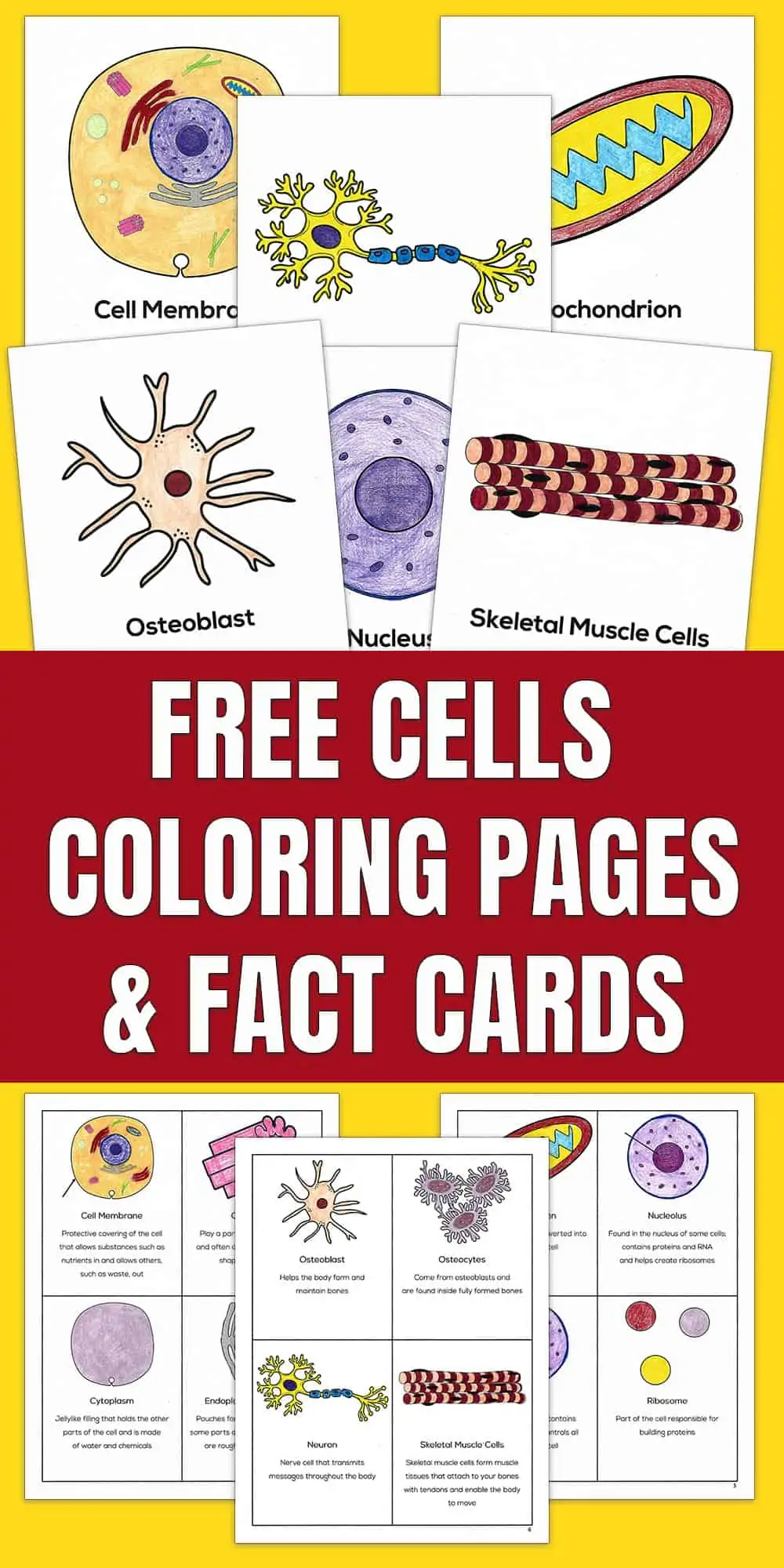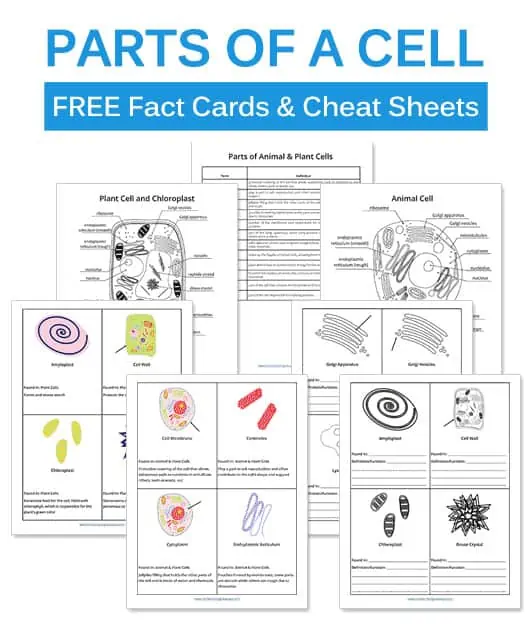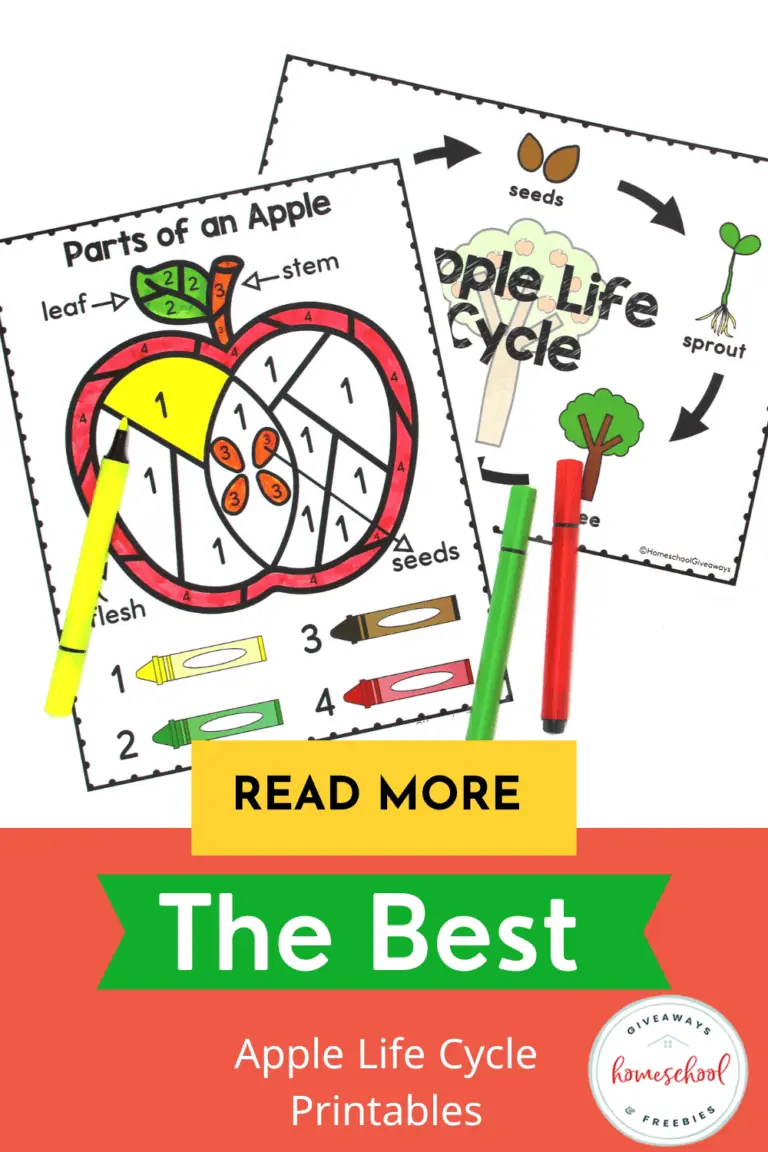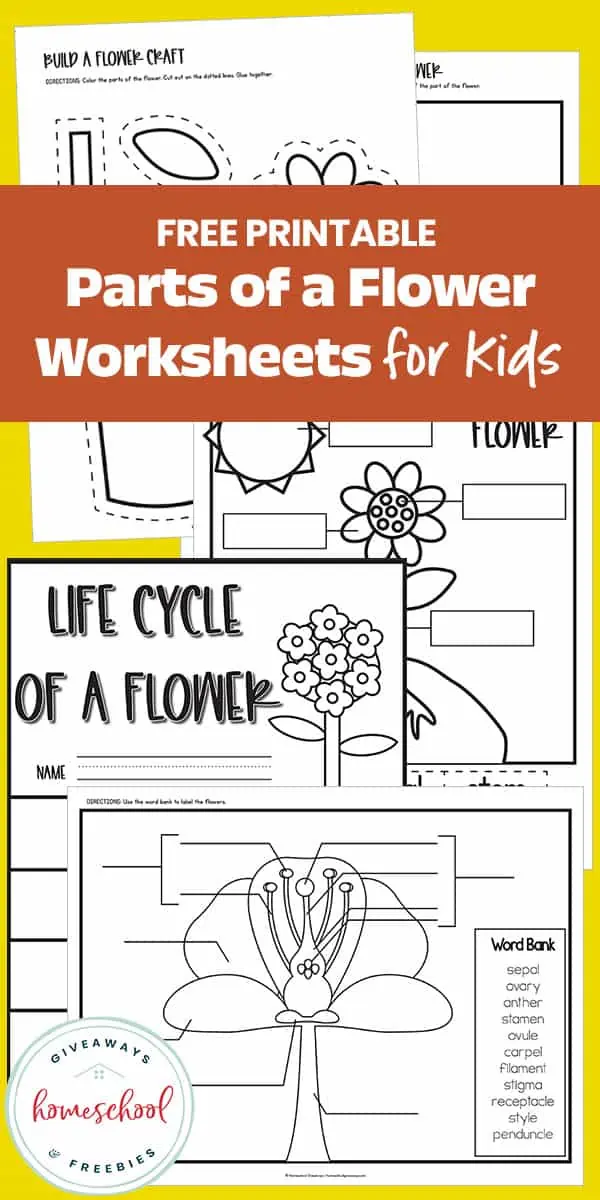Easy & Fun Animal Cell Science Projects for Kids
Published:
June 28, 2022
Contributor:
Jeannette Tuionetoa
Disclosure: This post may contain affiliate links, meaning if you decide to make a purchase via my links, I may earn a commission at no additional cost to you. See my disclosure for more info.
Learn about animal cells in an engaging way with animal cell science projects for kids. Learning about what makes up an of animal cell is an interesting topic for kids to study. However, adding an animal cell science project to the lesson can give them a closer look into cell biology in exciting ways.
Animal Cell Science Projects
Animal cell science projects can be a fun, hands-on way to learn facts about animal cells. If your student has an upcoming science project about animal cells, you might be wondering where to start.
Scroll to the bottom of the post for two free instant downloads: Parts of a Cell Fact Cards and Cheat Sheets, and a free Science Fair Project Planning Pack!
Sometimes it is difficult trying to examine where to start or what project to choose in a study of the animal cell. The following questions will help you decide your next steps.
What materials can I use to make an animal cell model?
Many of the items your students need for an animal cell science project are things you already have at home. You can use the leftovers you have from other projects as well. Here is a list to give you an idea of the materials to use for animal cell projects at home:
- Glue
- Scissors
- Toothpicks
- Construction paper
- Buttons
- Cardboard
- Glitter/confetti
- Modeling clay
- Styrofoam balls
- Various paint colors
How do you make an animal cell model out of paper?
If you have different color construction paper or even regular paper, your student can make animal cell models. To make a cross-section of an animal cell with paper, do the following:
- Cut out an animal cell design on a piece of colored construction paper.
- With glue or tape, stick the cutout cell on a plain piece of paper.
- Grab puff balls, ribbons, felt, foam pieces, or other small objects or materials to act as organelles.
- Use glue to stick the materials in the cell and use a marker to label all the animal cell organelles and parts of an animal cell.
How do you make a cytoplasm for a cell project?
Making cytoplasm is total hands-on mixing fun. Just pour 1/3 cup of warm water into a bowl. Then you can add 3 tablespoons of borax. The cytoplasm is supposed to be clear so no food coloring is required after the borax is dissolved.
Now, pour 2 cups of warm water and mix with school glue into another mixing bowl. Then pour the borax solution into this glue solution. Your children can mix it with their hands for about 5 minutes or until the desired thickness.
How do you cut a Styrofoam ball for a cell project?
Cutting a Styrofoam ball for a cell project is quite simple. The ball can be decided by cutting them right down the middle. Trace a line along the equator of the ball with a sharp pencil or pen.
There are several ways to cut the Styrofoam ball. You can use a sharp blade, a hot wire cutter, or even an electric knife to cut the Styrofoam down the middle.
How do you make an animal cell out of Jello?
- To make an animal cell out of Jello, you can do the following:
- Grab a Jello packet or gelatin with any light color (maybe yellow).
- Plan to use less water than the instructions say. This Jello represents the cell cytoplasm.
- Boil water and let the gelatin dissolve in the hot water and then add the same amount of cold water.
- Place an open plastic bag or 1-gallon Ziploc bag in a sturdy container like a pan or large bowl. Make sure you leave enough room for the cell components “organelles”. Close or seal the bag/Ziplock, then put it in the refrigerator.
- Wait an hour or so when the gelatin is almost set and place the materials/organelles in the cytoplasm/Jello.
How do you make a cell cake?
Making a cell cake is a fun way to study animal cells. And yes, it’s edible. You will need regular cake mix and its required ingredients; vanilla icing, food coloring, and assorted candies.
This site tells you what types of candies you could use on cell cake, like blue Mike and Ikes for mitochondria and Air Head Bites for vacuoles.
You also can get the following supplies right from your home and your local grocery stores.
- Make labels for the organelles of the cell
- Round cake pans
- Silicon cup cake molds
- Toothpicks
- Bake two box vanilla cakes and a vanilla cupcake.
- Put some food coloring and mix in the vanilla frosting. NOTE: Choose three different colors for the different parts of a cell.
- Apply the frosting colors. One on the first layer, one on the second layer, and a third on the cupcake.
- Place the candies on the top of the entire cake to represent the parts of the cell and then the labels.
- Take a load of pictures of the edible model of a cell to add to your students’ homeschool portfolio for cell biology science lessons.
How do you make an animal cell model out of candy?
Animal cell models made from treats are yummy. You can make some sugar cookies first. First, spread white frosting over the cookies, which represents the cytoplasm. Next, layer the top of the frosting with different candies from the link above.
Let’s explore the types of candy that can be used in your edible cell structure project.
What candy looks like mitochondria?
There are several different candies that go well as the cell organelle mitochondria because they are bean-shaped.
A few candies that would do well as mitochondria:
- Hot tamale candies
- Circus peanuts
- Blue or red Mike and Ikes
What candy can represent cytoplasm?
The cytoplasm may not have specific candies that look like it, but you can’t have an edible cell model without cytoplasm.
Items that can represent cytoplasm:
- Gelatin
- White or vanilla frosting
- Jello
- Applesauce
What candy can represent lysosomes?
Lysosomes are round organelles surrounded by a cell membrane. These lysosomes can be represented by the following candies:
- M&Ms
- Jelly beans
What can represent ribosomes?
Ribosomes are small organelles made of RA-rich cytoplasmic granules. These can be represented by rainbow sprinkles. Easy!
What candy can represent the Golgi apparatus?
The Golgi apparatus/Golgi body are small flat sacs formed by the cell membrane in the cell cytoplasm. They look like thick strips, so the following candies are perfect to describe the Golgi complex organelles:
- Blue or green pieces of fruit roll-ups
- Hard ribbon candy
What food can represent chloroplast?
Chloroplast has green chlorophyll which is the dominant pigment to this organelle. That means you must select a pretty specific type of candy (green). Here are some green candy ideas for your cell projects:
- Green flat candy wafers
- Green jelly beans or M&Ms
Animal Cell Science Projects
You won’t want to miss these awesome animal cell projects to try in your homeschool:
Learning About Cells with Slime
Need a school project to go along with your animal cell science curriculum at home? Older kids ad younger kids alike will enjoy this slime-filled cell model with cell elements model. Grab a printable cell model and use this great way to get kids interested in science
Animal Cells Model with Fruit
This edible animal cell project science activity will be a hit with your hungry children. Check out the guide on the types of organelles that correspond with what fruit like blueberries for ribosomes or pineapple for the rough endoplasmic reticulum. Don’t forget to take pictures, before your kids dig in.
How to Make a Styrofoam Animal 3D Cell Model
Check out this step-by-step instructional tutorial to help your student create a 3D animal cell model for a school project this year. Your student will need some supplies like a Styrofoam ball and materials to act as organelles. If you decide to do a non-edible science project, your kids will enjoy this hands-on 3D model.
Homemade Animal Cell Cookie Model
Who says science projects aren’t yummy? Grab a round cookie and then add the suggested yummy items to act as cell organelles like licorice as the membrane and peppermint as the nucleus. As your students add an organelle, task them to state the different function of each organelle.
Jello Animal Cell Model Project for Children
Kids love Jello and sweets. That is why this edible Jello animal cells project for kids is a fun way for them to get excited about learning all about animal cells in their science lessons. Lessons about these eukaryotic cells can be broken up to help kids get engaged ins a piece with eagerness.
Animal Cell Printables
To better understand animal and plant cells, you can explore some printable cell worksheets. Then add these easy & fun animal cell science projects for kids to present the structural units of an animal cell to enjoy alongside your lessons.
Cell Coloring Worksheets
If your students enjoy coloring, these cell coloring worksheets are a great addition to your animal cell science projects.
Cell Notebooking Pages
This animal and plant cell worksheets printable is fun for kids who enjoy notebooking.
Parts of the Cell Fact Cards & Cheat Sheets PDF Download
The Free Parts of a Cell Cheat Sheet and Fact Cards is a great tool to have on hand when studying animal cells.
Parts of a Cell Cheat Sheet
The cheat sheet includes 19 important parts of the cell and defines each one. It covers: cell membrane, centrioles, cytoplasm, endoplasmic reticulum, Golgi apparatus, Golgi vesicles, lysosome, microtubules, mitochondria, nucleolus, nucleus, ribosome, amyloplast, cell wall, chloroplast, and more.
Parts of a Cell Fact Cards
The fact cards illustrate the parts of a cell and include definitions, Furthermore, they also list whether it is found in animal cells, plant cells, or both.
Scroll to the bottom of the post and click on the Instant Downloads to save them to your computer.
Science Fair Project Planning Pack PDF
This Science Project Planning Pack can help your student produce results that could result in a winning science fair project! Students can use the science fair project templates to write their observations and collect data, as well as results and conclusions. Download it for free below.












